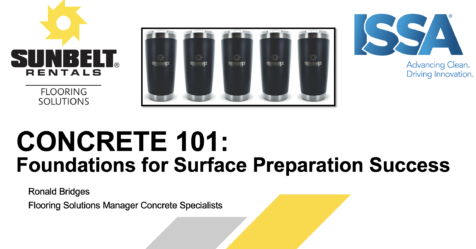Opinions from the past regarding staff training still hold relevance today. “The only thing worse than training your employees and having them leave is not training them and having them stay,” quipped Henry Ford, Ford Motor Co. founder.
Decades later Sir Richard Branson, Virgin Group founder, added “Train people well enough so they can leave. Treat them well enough so they don’t have to.”
While no doubt exists as to the importance of staff training, employers often have questions about the best way to go about it. At least seven steps are involved in building a foundation for
effective training.
STEP 1: Examine worker mindset
Mindset is a self-perception or belief that people hold about themselves and their abilities. A growth mindset is the belief that one’s traits, skills, and even intelligence can be developed and improved through effort, feedback, and learning—leading to more success and fulfillment in life, notes Carol Dweck in her book, Mindset: The New Psychology of Success.
A fixed mindset holds that traits such as intelligence, talent, and personality are fixed and cannot be changed.
When training workers, you can assess their mindsets by reviewing relevant statements they make. An employee who states that their cleaning style or approach is something they can’t change
very much—perhaps offering the statement, “I’m not detail-oriented; that’s just me”—is exhibiting a fixed mindset. Employees with a fixed mindset may also claim they can’t change their
productivity level, perhaps explaining, “I only have one speed.”
Employees with a growth mindset will believe that no matter how much cleaning experience they have, room for improvement is always there. They may make statements similar to “I want to
grow and see what’s possible for me.”
STEP 2: Value the work
There are rumors that when President John F. Kennedy met a janitor cleaning a restroom at NASA, he asked what the worker was doing. The man answered: “Mr. President, I’m helping to put
a man on the moon.”
That story, while perhaps fictional, highlights a deep truth: people want to find meaning in their work and feel their jobs are socially important. Therefore, effective training of cleaning
professionals starts with making it clear their work is invaluable.
While it is difficult to be inspired when told “It’s your job to clean the toilets,” it is altogether different when you know your role is to create a healthy and hygienic environment for building
inhabitants while making a living wage.
Wages are just one aspect of a career that signifies its value to society. Benefits and working conditions, along with career development and upward mobility opportunities underpinned by effective training, help promote an operational—if not societal—view of custodial work as socially important.
STEP 3: Have a mission
An effective mission statement provides a concise description of your organization’s core purpose. Before you can begin employee training in
earnest, develop a grass-roots mission statement with input from all stakeholders that:
- Summarizes your business’s goals, values, and services.
- Communicates your vision and purpose to your customers, employees, and stakeholders.
- Guides your decision-making and strategy development— including training strategies and programs—to ensure the continual improvement of worker skills and upward mobility.
For example, consider the sample mission statement below:
“We provide professional and affordable cleaning services for commercial facilities, using green-certified, sustainable products and practices. We strive to exceed our customers’ expectations and create a healthy and hygienic environment for them, while ensuring our workers are the safest and most highly trained in the industry.”
STEP 4: Create a standardized system
“Standardized work and training your people to be the best they can be actually go hand in hand,” noted author Jeffrey Liker in his book Toyota Talent. He explains that creating standardized
work reduces the variation and chaos in a process, yielding superior results. Liker asked, “If the work method is random, undefined, and undisciplined, how would it be possible to effectively teach it to others so they can perform the work in a reliable way?”
Standardizing your cleaning process involves determining the one best way to perform each task, such as dusting, vacuuming, flat or horizontal surface cleaning, and floor care. And, yes, the details matter. Marriott Bonvoy Hotels have a 66-step procedure for cleaning a room in 30 minutes or less, according to the book, The Spirit to Serve by Kathy Ann Brown and J.W. Marriott.
Allow several months to complete your standardization process, seeking input from consultants in the cleaning industry, companies that make your preferred products, and your best workers.
People learn best when they put new ideas in their own words and emulate the processes. Standardize the training using a two-part show and tell (SAT) technique:
- Show workers the correct process and tell them what it involves (SAT).
- Then have them show you the procedure and tell it back to you (Reverse SAT).
Each trainer should repeat the above steps until workers have established procedural and muscle memory, and fully grasp the concepts.
STEP 5: Clean for health
Methods of cleaning should benefit and protect the health of both cleaning workers and those who occupy the facility. Start your cleaning for health approach by monitoring the facility air using wall-mounted, real-time indoor air quality (IAQ) sensors to measure the presence of airborne particles and other pollutants.
Share the resulting IAQ sensor output data with workers and involve them in decisions regarding vacuuming and dusting tools and procedures. Make it a teaching moment; they will soon realize
that the use of a feather duster or inefficient vacuum produces much higher pollution levels than the use of dampened microfiber cloth or a well-filtered vacuum cleaner.
Your staff can make similar comparisons using adenosine triphosphate (ATP) meters to measure organic residues before and after cleaning with different tools, or using a black light to check for
body fluid residues in restrooms when comparing spray-and-wipe, spray-and-vacuum, and mop-and-bucket cleaning technology.
STEP 6: Invest in skills development
High turnover is the norm in many cleaning operations, and the cost of replacing a low-wage employee is about 16% of that person’s annual salary, according to the Center for American
Progress.
Despite this turnover, staff training investments can produce major returns. For example, if a cleaning skills training program costs US$10,000 and generates $15,000 in benefits, the return on
investment (ROI) ($15,000 minus $10,000) is $5,000 or 50%. This means that for every dollar spent on cleaning skills training, the business gains $1.50 in benefits.
STEP 7: Provide a career path
By establishing a career path for your employees, you set up their occupation as a vocation, not a temporary job.
Training and certification enable your workers to stand out from the competition and demonstrate their competence and skill. Courses are available online or in-person that cover topics such as cleaning for health, infection prevention, customer service, and other business skills. Visit issa.com/education to learn about training and certification offered through the Cleaning Management Institute (CMI), the Cleaning Industry Management Standard (CIMS), and the Global Biorisk Advisory CouncilTM (GBAC), a division of ISSA.
Provide opportunities for your employees to pursue specialization—such as a focus on cleaning medical, dental, or industrial facilities—or ways for them to advance within an organization by becoming a supervisor, manager, trainer, cleaning systems specialist, or quality inspector.
Enable your staff to join professional associations and networks, such as the ISSA and the Indoor Environmental Healthcare and Hospitality Association (IEHA), a division of ISSA. Professional associations provide many benefits, such as access to resources, information, education, recognition, and support. They also offer networking opportunities which can lead to
new clients, partners, and mentors.
12 REASONS TO TRAIN
- Enhance worker skills and knowledge in delivering high-quality, safe cleaning services
- Instill proper use of equipment and chemicals
- Instruct in infection control and prevention
- Teach waste management and environmental sustainability
- Teach customer service
- Help workers comply with standards, regulations, policies, and procedures
- Improve the efficiency and effectiveness of operations
- Reduce accidents and injuries
- Increase satisfaction and loyalty of customers and employees
- Promote a positive image of the organization
- Recognize and reward the valuable role of cleaning workers
- Provide opportunities for career development and advancement




